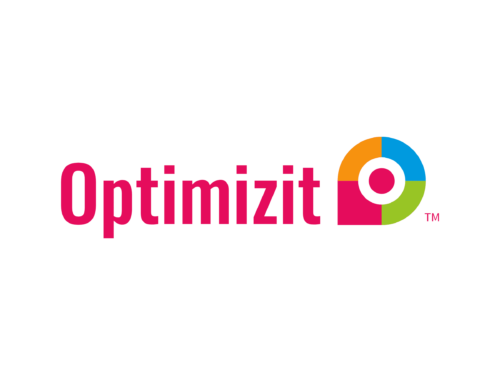Writing awesome blog posts can help you connect with your audience and boost your online presence. Great blog posts capture the reader’s attention, provide valuable information, and encourage them to take action. But how do you create such effective content?
First, it’s essential to understand who you’re writing for and what they need. When you know your audience, you can tailor your message to solve their problems or answer their questions. This makes your blog posts not only engaging but also useful.
A catchy headline is the next ingredient for a successful blog post. The right headline can make the difference between someone clicking to read your content or scrolling past it. Your headline should grab attention and give a hint about what the reader can expect.
Once your headline attracts readers, the structure of your blog post keeps them engaged. Using short paragraphs, lists, and clear sections makes your content easy to read. Good structure helps convey your message clearly and keeps your audience interested.
Finally, optimizing your blog for SEO and user experience ensures that your content reaches the right people. SEO practices help improve your visibility on search engines, while a good user experience keeps readers on your site longer, increasing the chances of conversion.
Understanding Your Audience and Purpose
Before writing, it’s crucial to understand your audience and the purpose of your blog post. Knowing your audience helps you tailor your content to address their needs and interests. Here are some steps to help you understand your audience better:
- Create Audience Personas: Develop fictional characters that represent your ideal readers. Include details like age, occupation, interests, and pain points. This helps you visualize who you are writing for.
- Research Their Needs: Use tools like surveys, social media, and analytics to find out what your audience is interested in. Look at comments and feedback to identify common questions or concerns.
- Set Clear Goals: Decide what you want to achieve with your blog post. Are you trying to educate, entertain, or persuade your readers? Knowing your purpose helps you stay focused and create relevant content.
By understanding your audience and setting clear goals, you can produce content that resonates with your readers and fulfills their needs. This approach increases the chances of engaging your audience and achieving your blog’s objectives.
Crafting Engaging Headlines
The headline is one of the most important parts of your blog post. It’s the first thing people see, and it determines whether they’ll click to read more. An engaging headline grabs attention and gives readers a reason to click. Here are some tips for crafting compelling headlines:
- Be Clear and Specific: Avoid vague headlines. Instead, give a clear idea of what the reader can expect. For example, “5 Easy Tips to Boost Your Blog Traffic” is more specific than “How to Improve Your Blog.”
- Use Power Words: Words like “awesome,” “easy,” “proven,” and “effective” can make your headline more appealing. These words create excitement and interest.
- Ask Questions: Headlines that ask a question can provoke curiosity. For example, “Struggling to Write Blog Posts? Here’s What You Need to Know.”
- Add Numbers: List headlines often perform well because they promise specific insights. For example, “7 Secrets to Writing Engaging Blog Posts.”
- Use Keywords: Including relevant keywords in your headline helps with SEO. It makes your post easier to find on search engines.
Crafting a great headline takes practice, but it’s worth the effort. A strong headline can significantly increase the number of people who read your blog post.
Structuring Your Blog Post for Readability
A well-structured blog post is easy to read and understand. Structure helps break down information into digestible chunks, making it more appealing to readers. Here are some tips for good blog structure:
- Use Short Paragraphs: Long paragraphs can be daunting. Stick to short paragraphs with 2-3 sentences to make your content more readable.
- Incorporate Subheadings: Subheadings help break up the text and guide readers through your post. They make it easier to skim and find key points.
- Include Lists and Bullet Points: Lists are easy to read and highlight important information. Bullet points help organize content and make it scannable.
- Use Images and Graphics: Visuals can break up text and add interest. Relevant images, infographics, and charts can make your content more engaging.
- Keep Your Sentences Simple: Avoid complex sentences. Simple sentences are easier to read and understand, making your message clearer.
By structuring your blog post well, you improve its readability and make it more enjoyable for your audience to read. Good structure keeps readers engaged and encourages them to read your entire post.
Optimizing for SEO and User Experience
Optimizing your blog post for SEO helps it rank higher in search engines, making it easier for people to find your content. Good SEO practices improve visibility and drive more traffic to your site. Follow these tips to optimize your blog post:
- Use Relevant Keywords: Identify and include keywords that your audience is likely to search for. Place them naturally in your title, subheadings, and throughout the content.
- Write Meta Descriptions: A concise and compelling meta description can improve click-through rates. Summarize your post in 155 characters, including a keyword.
- Add Internal and External Links: Internal links guide readers to other relevant content on your site, while external links to reputable sources can build credibility.
- Optimize Images: Use descriptive file names and alt text for images. This helps search engines understand what the images are about and improves SEO.
- Improve Page Load Speed: A slow website can deter visitors. Compress images, use caching, and minimize code to improve loading times.
- Ensure Mobile-Friendliness: Many readers access content on mobile devices. Make sure your blog is responsive and looks good on all screen sizes.
Optimizing for SEO and user experience helps ensure that your blog post reaches a larger audience and provides a smooth reading experience.
Conclusion
Creating awesome blog posts involves understanding your audience, crafting engaging headlines, structuring your content for readability, and optimizing for SEO and user experience. Each step plays a vital role in making your blog post effective and engaging. When you know your readers and what they need, you can create content that resonates with them. A catchy headline and clear structure draw readers in and keep them interested. Finally, good SEO ensures that your blog reaches more people and provides a great user experience.
At Optimizit, we specialize in helping you boost your online presence with effective blog content-writing services. If you’re ready to take your blog to the next level, contact Optimizit today!

